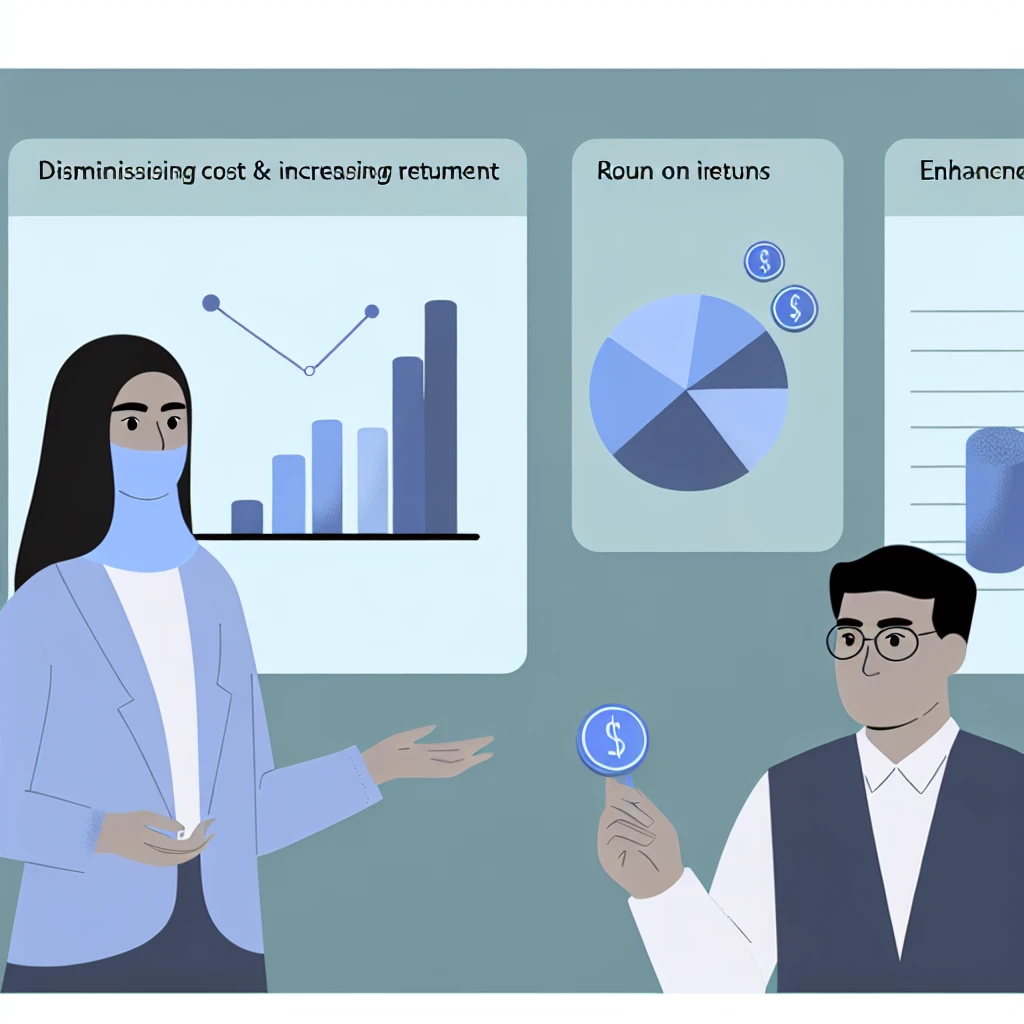Table of contents
The evolution of marketing in the digital age has brought about numerous opportunities and challenges. As businesses strive to reach their target audience in a dynamic online environment, the utilization of digital marketing opens up new frontiers while presenting its own set of limitations. Understanding the primary benefits and drawbacks of digital marketing is essential for any organization seeking to establish an effective online presence.
Unleashing the Benefits of Digital Marketing
The digital age has revamped the way businesses interact with their audience, creating an exciting playground of opportunities. With tools that enable brands to stretch their reach beyond the traditional borders, digital marketing stands tall as a revolutionary force in the business world. Embracing these tools can lead to a remarkable uplift in how companies connect with potential customers, proving just how much power lies within a well-crafted online strategy. Let’s dive into the incredible advantages that digital marketing brings to the table.
Enhanced Reach and Targeting Capabilities

The digital age has revolutionized the way businesses connect with people. With just a few clicks, a company can now engage with millions worldwide, breaking geographical barriers that traditional marketing couldn’t overcome. The ability to reach a vast audience is one of the shining stars in the digital marketing universe. But it’s not just about reaching more people; it’s also about reaching the right people. Targeting capabilities have become incredibly sophisticated, enabling businesses to deliver content to potential customers based on their behaviors, interests, and demographics.
Imagine being able to display your ad exclusively to teens who love skateboarding or to new parents who are looking for baby essentials. That’s the power of digital marketing. Through tactics like search engine optimization (SEO), social media filters, and pay-per-click (PPC) advertising, marketers can put their brand in front of the eyes that are most likely to be interested. This heightened targeting goes hand in hand with analytics, aiding businesses in fine-tuning their strategies for even better results. The upshot? More bang for your marketing buck and a clearer path to forging meaningful connections with your audience.
Cost-Effectiveness and ROI Enhancement

In today’s online jungle, it’s a big win for businesses when they can put their brand in front of the right eyes without spending a fortune. Digital marketing is like the trusty slingshot in a world of marketing Goliaths—it’s surprisingly affordable and can yield mighty results. By honing in on specific audiences through digital channels, companies can see a serious uplift in their return on investment (ROI).
The beauty of online marketing lies in its scalability. Whether you’re a startup on a shoestring budget or a well-established brand, you’ve got the tools to measure exactly how much bang you’re getting for your buck. With detailed tracking systems, businesses can see real-time results and tweak campaigns for maximum effectiveness, ensuring every penny spent has the potential to translate into profits.
Real-Time Analytics and Tracking

Real-time analytics have transformed the way businesses understand their online activities. With tools that provide instant data, companies can see how their campaigns are performing at any moment. This means they can quickly spot when something is a hit with their audience or when it misses the mark.
Through tracking capabilities, it becomes easier to refine marketing strategies on the fly. Instead of waiting weeks or months to evaluate the success of a campaign, real-time metrics allow for immediate adjustments. This agility can lead to significant improvements in both customer engagement and overall efficacy of digital marketing efforts.
Navigating the Drawbacks of Digital Marketing

While digital marketing unlocks a treasure trove of opportunities, it also lays out a maze of challenges that businesses need to navigate. Just like any other story worth telling, this one has its flip side—glaring issues that demand attention. From the struggle to capture fragmented attention spans to the ongoing battle with data privacy, the pitfalls of digital marketing are as real as its perks. Let’s delve into these sticky points, shining a light on the hurdles that might trip you up on your way to online triumph.
Information Overload and Attention Fragmentation
In today’s digital era, we are bombarded with a staggering amount of content every minute of every day. This can lead to what’s known as information overload, where consumers are so overwhelmed by the volume of digital marketing messages that they can’t process or retain them effectively. It becomes tougher for a message to stand out and make an impact when users are swamped by emails, ads, and social media posts.
Alongside this is attention fragmentation. With so many distractions across various devices and platforms, maintaining consumer focus is like trying to hold onto water with your bare hands. This means that even when you reach your audience, they might only give you a sliver of their divided attention, reducing the chances of your marketing efforts hitting the mark. Companies must cut through the noise with creativity and relevance to capture and keep that fleeting consumer interest.
Data Privacy and Security Concerns
In the bustling world of online business, keeping customer information safe is a top priority. But with so much data zipping through cyberspace, the risk of a breach is higher than ever. Companies harnessing the power of digital marketing often collect a ton of personal data from their audience. This info helps in delivering personalized content and ads, which, let’s be real, can be pretty awesome for both the business and customers.
However, here’s the flip side: If this sensitive data gets into the wrong hands, it’s a recipe for trouble. We’re talking identity theft, financial loss, and a severe hit to a company’s rep. It’s the kind of nightmare no business wants to experience. To dodge these issues, businesses must armor up with strong security measures and be transparent about how they’re using data. By doing so, they earn the trust of their community, proving they’re not only in it to win it but also to protect their customers along the journey.
Potential for Oversaturation and Ad Blindness
Have you ever felt bombarded by so many online ads that you start tuning them out? That’s ad blindness, a problem where consumers become so used to seeing ads that they don’t even register them anymore. On the flip side, businesses are cranking out more and more ads, trying to get noticed, which creates a cycle of oversaturation.
Imagine the internet as a big billboard where everyone is shouting for attention. Over time, people walking by might just put on headphones to drown out the noise. The same thing happens online. If your business’s message is just one of the thousands they see every day, people might start to ignore it without even thinking. That’s a challenge for digital marketers: finding a way to shine in a world that’s full of flashing lights.
Striking a Balance: Holistic Approach to Digital Marketing

As we investigate the energetic domain of advanced showcasing, it’s fundamental to embrace a comprehensive procedure that maximizes the openings displayed by the online scene. By recognizing both the positive and negative viewpoints, businesses can dodge casting nets aimlessly and instep angle deliberately within the sweeping ocean of the web. Exploring through the streams of online patterns, information security issues, and the hazard of advertisement immersion, a well-rounded computerized methodology looks for to establish the fragile adjust required for supported victory and flexibility.
Leveraging Diverse Digital Channels for Maximum Impact
Using a wide range of digital channels is like having a toolbox with different tools for different jobs. When a business uses various platforms like social media, email, SEO, and more, they can reach all sorts of customers in their favorite online spots. It’s all about being where your audience is, whether that’s scrolling through Instagram, searching on Google, or checking their emails.
This approach isn’t just smart; it’s powerful. By spreading out the marketing efforts, businesses reduce the risk of over-relying on one method. Plus, they can tell their story in lots of different ways. A compelling blog post, a catchy hashtag, or an eye-catching email campaign can all work together to create a strong, unified brand message. Think of it as a marketing mixtape, with each channel adding a unique beat to the rhythm of a brand’s identity.
Evaluating and Mitigating Risks in Digital Marketing Strategies

Digital marketing strategies come with their own set of risks, but don’t worry! By evaluating these potential pitfalls carefully, businesses can protect themselves and keep their marketing game strong. Evaluating risks means looking closely at what can go wrong and figuring out how likely it is to happen. It’s like checking the forecast before a picnic; if rain is predicted, you’d pack a tent!
Mitigating risks is about taking steps to reduce these dangers. Imagine you’re on a boat; you’d want life jackets onboard just in case, right? In the digital world, this might mean having a plan B for technology fails or keeping an eye on your online reputation to quickly address any negative comments. By staying smart, alert, and prepared, you can keep your digital marketing strategy sailing smoothly even in choppy waters.
The Future of Digital Marketing in an Evolving Landscape

The digital realm is constantly on the move, shaping and reshaping the way we interact with brands and products. As we look ahead, the future of digital marketing appears to be a thrilling journey marked by continuous innovation. With advances in technology like artificial intelligence, virtual reality, and ever-growing data capabilities, marketers are set to have an even richer toolkit at their disposal. The key will be in leveraging these tools to create more personalized and immersive experiences for users.
However, such advancements also bring forth new challenges. As digital platforms evolve, so do the expectations of consumers, who yearn for both novelty and privacy in their digital interactions. Marketers will have to navigate this delicate balance, ensuring that while they push the boundaries of what’s possible, they also maintain the trust and confidence of their audience. Embracing this fast-paced change, while keeping a sharp eye on the ethical implications, is what will distinguish the successful digital marketing strategies of the future.
Conclusion
In conclusion, the realm of digital marketing is a dynamic arena where opportunities and challenges coexist. By comprehending the advantages and shortcomings of digital marketing, organizations can navigate this landscape with informed strategies, seizing the potential for growth while safeguarding against potential pitfalls. The future of digital marketing lies in the hands of those who can harness its benefits while adroitly addressing its drawbacks, thus shaping the online landscape in a constantly evolving world.



